- Todd Kelley
- Dr
- TRAILS
- https://polytechnic.purdue.edu/trails
- Purdue University
- Jeffrey Holland
- Dr.
- TRAILS
- https://polytechnic.purdue.edu/trails
- Purdue University
TRAILS
NSF Awards: 1513248
The video will introduce the TRAILS's approach and outcomes from the first-year project implementation. TRAILS created a model of integrative STEM instruction and teacher professional development to enhance student learning of STEM content while generating interest in STEM careers. TRAILS seeks to increase STEM self-efficacy within science and technology teachers and advance students’ learning of STEM content at schools in rural settings. TRAILS use engineering design as a STEM subject integrator, providing an authentic learning context to promote 21st century skills, and motivate students to pursue STEM careers. The TRAILS model blends scientific inquiry and engineering design to teach common STEM practices and STEM habits of mind. The TRAILS project leverages the use of innovative tools such as additive technology, 3D scanning technology, and parametric modeling software allowing students to design and test innovative design solutions. The video includes various interviews and outcomes of the in-class design project.
TRAILS
NSF Awards: 1513248
The video will introduce the TRAILS's approach and outcomes from the first-year project implementation. TRAILS created a model of integrative STEM instruction and teacher professional development to enhance student learning of STEM content while generating interest in STEM careers. TRAILS seeks to increase STEM self-efficacy within science and technology teachers and advance students’ learning of STEM content at schools in rural settings. TRAILS use engineering design as a STEM subject integrator, providing an authentic learning context to promote 21st century skills, and motivate students to pursue STEM careers. The TRAILS model blends scientific inquiry and engineering design to teach common STEM practices and STEM habits of mind. The TRAILS project leverages the use of innovative tools such as additive technology, 3D scanning technology, and parametric modeling software allowing students to design and test innovative design solutions. The video includes various interviews and outcomes of the in-class design project.
-
 Developing Adanced STEM High Schools in Egypt
Developing Adanced STEM High Schools in Egypt
F. Merlino
-
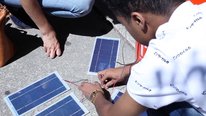 Educational Pathways into College and Career (EPICC)
Educational Pathways into College and Career (EPICC)
Joanna Totino
-
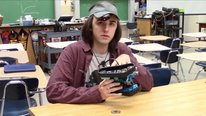 The Design and Engineering of Scientific Instrumentation
The Design and Engineering of Scientific Instrumentation
Kinnari Atit
-
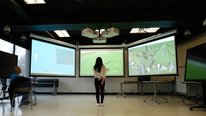 ELASTIC3S
ELASTIC3S
Robb Lindgren
-
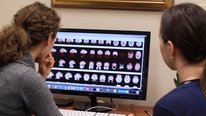 Cognitive and Neural Benefits of Teaching Spatial Thinking
Cognitive and Neural Benefits of Teaching Spatial Thinking
Emily Peterson
-
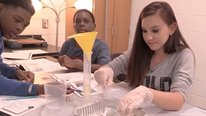 Advanced Manufacturing and Prototyping Integrated to Unlock
Advanced Manufacturing and Prototyping Integrated to Unlock
Jayma Koval
5915 Views
Continue the discussion of this presentation on the Multiplex. Go to Multiplex
5915 Views
presentation
has been viewed
Related videos you might be interested in...
-
 Developing Adanced STEM High Schools in Egypt
Developing Adanced STEM High Schools in Egypt
F. Merlino
-
 Educational Pathways into College and Career (EPICC)
Educational Pathways into College and Career (EPICC)
Joanna Totino
-
 The Design and Engineering of Scientific Instrumentation
The Design and Engineering of Scientific Instrumentation
Kinnari Atit
-
 ELASTIC3S
ELASTIC3S
Robb Lindgren
-
 Cognitive and Neural Benefits of Teaching Spatial Thinking
Cognitive and Neural Benefits of Teaching Spatial Thinking
Emily Peterson
-
 Advanced Manufacturing and Prototyping Integrated to Unlock
Advanced Manufacturing and Prototyping Integrated to Unlock
Jayma Koval


Todd Kelley
Dr
Teachers and Researchers Advancing Integrated Lessons in STEM is an I-TEST in our second year of funding. We are excited to host a full cohort of science and engineering/technology teachers for two weeks of professional development in June. The PD will focus on using engineering design and scientific inquiry with entomology as the context for biomimicry inspired design. Teachers learn how to use 3D printing to enhance STEM learning and address 21st Century Skills. Featuring a integrated STEM lesson that provide opportunities for teachers to investigate a local pond for aquatic insects and use these examples to design and 3D print bio-mimicry inspired fishing lures mathematically analyzed for buoyancy. Teachers use this lesson unit example to inspire their own co-create integrated STEM lesson in week #2 of the PD.
TRAILS also builds a Community of Practice of industry partners and experts in biomimicry, adaptive manufacturing, 3D scanning, and innovation to increase teachers knowledge in STEM careers. Preliminary research results indicate TRAILS has helped increase teacher's self-efficacy and career awareness in STEM fields. Student data is currently under analysis from cohort 1. For more information about our theoretical model see https://stemeducationjournal.springeropen.com/a...
Jennifer Yurof
Hi Todd and Jeffrey - thanks for sharing your work! The teachers seem truly engaged and inspired by the professional development. I have a few questions - How do you maintain contact with them after the workshop? How were teachers selected to participate? Did you provide supplies for the teachers to use with their students?
I look forward to hearing more about TRAILS!
Jeffrey Holland
Hi Jennifer,
Yes, we had a great connection with the teachers during the professional development. We have an online Community of Practice to remain engaged. This includes all participants: researchers, teachers, and industry partners. We also visit some of the classrooms for helping with classes and for the research on student learning.
The teachers are provided with all of the materials necessary for the aquatic insect part of the lesson (sampling and identifying aquatic insects), and for the 3-D printing.
Regarding the selection process, we focus on rural schools that have 3-D printing hardware and parametric modeling software.
Todd Kelley
Dr
Jennifer,
I would also add that we stay connected with the teachers with follow-on sessions using WebEx and we had excellent participation as well as one follow-on session on campus in the middle of the year. Teachers had to apply to TRAILS and they had to come in pairs (one science and one engineering/technology teachers), they also had to commit to collaborate to integrated STEM lessons and the school administration has to commit to support this effort. We do provide teachers with a kit of materials for the exemplar lesson called Dbait an purchased materials to support their second lesson they co-created.
Thanks,
Todd
Steven Rogg
Associate Professor of Education - STEM
So, I happened to have spent my afternoon today with 25 high school students in an experience that also involved water sampling in a local river. We hadn't considered 3-D printing the macroinvertebrates (or the leeches). I'd love to hear more abut the design challenges! (I am disappointed, however, that the video did not end with"Boiler up!")
Jeffrey Holland
Hello Steven,
Anything that gets students interacting with their outdoor environment is great. If you are interested in an activity to evaluate water quality with aquatic insects, my graduate student Julie Speelman developed such an activity that we are using as an "add-on module" with the TRAILS lessons. It is available at the Purdue Education Store.
Steven Rogg, Ph.D.
Heidi Larson
Project Director
I liked that you're using insects as your base -- an element present in every environment and thus scalable yet, despite their commonalities, there are so many differences between the species to keep the lessons interesting and variable.
I'm also interested in Jennifer's question of how you're tracking the impact on teachers once they leave the PD. Also, how did you go about establishing the community of practice of industry partners and experts?
Todd Kelley
Dr
Heidi,
Great question about tracking progress. We have three rounds of surveys that track teachers self-efficacy, STEM career awareness, and implementation of engineering design and technology throughout the academic year. We also have follow-on sessions, some on-line WebEx and one face to face in the middle of the academic year. The WebEx session was so successful that we will have more of them for cohort II during the year. Teachers enjoyed checking in with colleagues from other schools and sharing best practices via distance. This method was much better participation than a blog discussion post. Our external evaluation team also conducts focus groups to help us track progress and identify pitfalls.
Establish the community of practice has been easier than expected. It helps that we are located in the Midwest with many industries right in town such as Caterpillar and Subaru as well as Purdue STEM faculty. We have worked hard to establish partnerships and reach out to our greater community and they have responded. We have guest speakers everyday of the two week institute and from there teachers connect with these experts during the year.
Thanks,
Todd
Heidi Larson
Heidi Larson
Project Director
That's amazing that you have guest speakers every day! It is interesting about the blog discussion post. These used to be the way to go, but I'm wondering if with so many opportunities to connect via quick and easy online correspondence (e.g. Facebook, Twitter), teachers and other professionals now see more relevance in real-time, deeper connections. We have also mostly dropped online discussions in our work.
Did you develop your own surveys? Or were you able to use ones already developed and validated?
Todd Kelley
Dr
Heidi,
We have used existing instruments such as the STEBI, T-STEM, and DET surveys for teachers for pre/post and delayed post assessments. These worked well for the goals of our project. We did create our own knowledge tests for students STEM knowledge. We also used 21st century rubrics from the Buck Institute for PBL (Boss, 2012) that we modified for our state standards. This has worked well to assess 21st century skills. We are grateful these various instruments exist so we can focus our efforts in other areas and many of the instruments have already gone through validation and reliability tests.
Todd
Heidi Larson
Heidi Larson
Project Director
Thanks for your response, and I'm glad you were able to focus on your key research questions rather than on developing measurement tools.
Heidi Larson
Project Director
I've appreciated learning about your project. It also reminds me of Harvard's eco-mobile, where kids go off to a pond using water testing probes and augmented reality to engage with the ecosystem: http://ecolearn.gse.harvard.edu/ecoMOBILE/overv.... I think there's a virtual simulation as well. I appreciate that you're helping teachers help kids see the relationship between the environment in which they live and the science they are learning!
My only request for your video would be to turn down the background music. For me it was a bit distracting and I had to strain to hear the people talking.
Nice job, and best of luck!
Heidi Larson
Project Director
Just discovered that the newest version of the Harvard virtual simulation ecosystem project has a video here, if you're interested: http://stemforall2017.videohall.com/presentatio...
Further posting is closed as the showcase has ended.